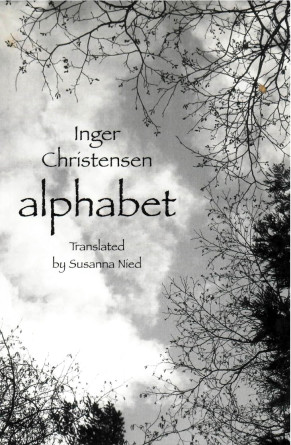Inger Christensen was a Danish poet, novelist, essayist and editor. Christensen is considered to be one the greatest Danish poetic experimentalists of her era. She has won countless awards, including the Grand Prix des Biennales Internationales de Poésie in 1991 and the European Poetry Prize in 1995.
alphabet is one of her most well-known works of poetry. What’s unique about this piece, is that it’s systematically framed. There are 14 sections of the poem, each associated with a letter of the alphabet, while the number of lines found in each section are dictated by the Fibonacci sequence (0, 1, 1, 2, 3, 5, 8 …). In mathematics, when broken down, the Fibonacci sequence reveals the golden ration: 1.1618; or, numerical perfection. The lines are, in a way, then, directed by perfection, but also constrained by such numerical boundaries. So, as the poem progresses, each section becomes greater in length.
The piece involves themes related to nature and ecological devastation, among larger themes of nuclear war. As beautifully described by The Complete Review:
“alphabet is a poem that both basks in the wonder of the world and nature, and is keenly aware of the man-made threats to it. It begins: “apricot trees exist, apricot trees exist”. Even here the seeds of danger are present, unmentioned but inescapable. The apricot is an attractive, tasty fruit, but, as Christensen surely expects here readers to know, its pit contains poison.”
It is a brilliant read for anyone interested in the relationship between nature and society and passionate about great poetry.
Here is a little taste, if you’re still not convinced:
3
cicadas exist; chicory, chromium
citrus trees; cicadas exist;
cicadas, cedars, cypresses, the cere-
bellum4
doves exist, dreamers, and dolls;
killers exist, and doves, and doves;
haze, dioxin, and days; days
exist, days and death; and poems
exist; poems, days, death

